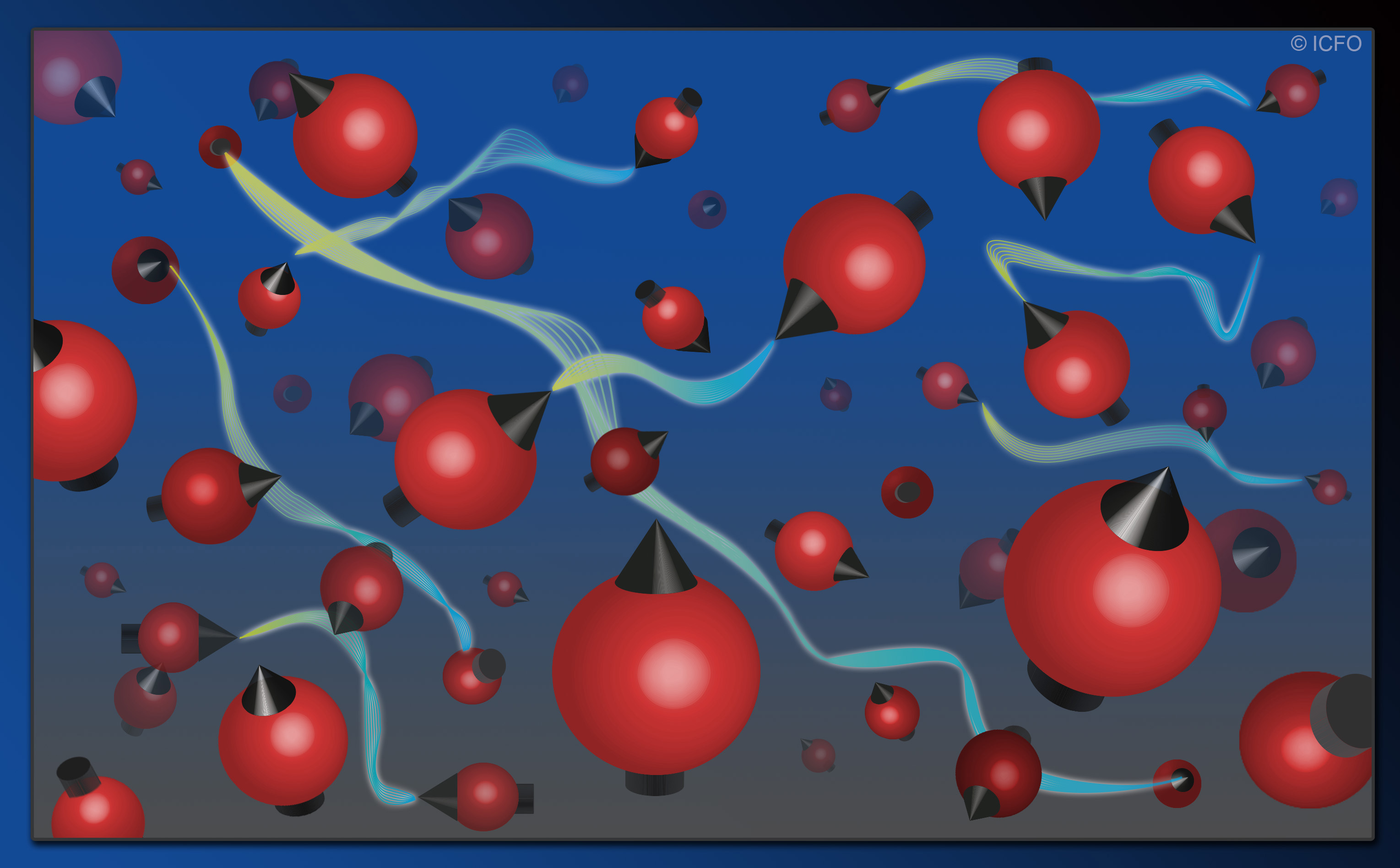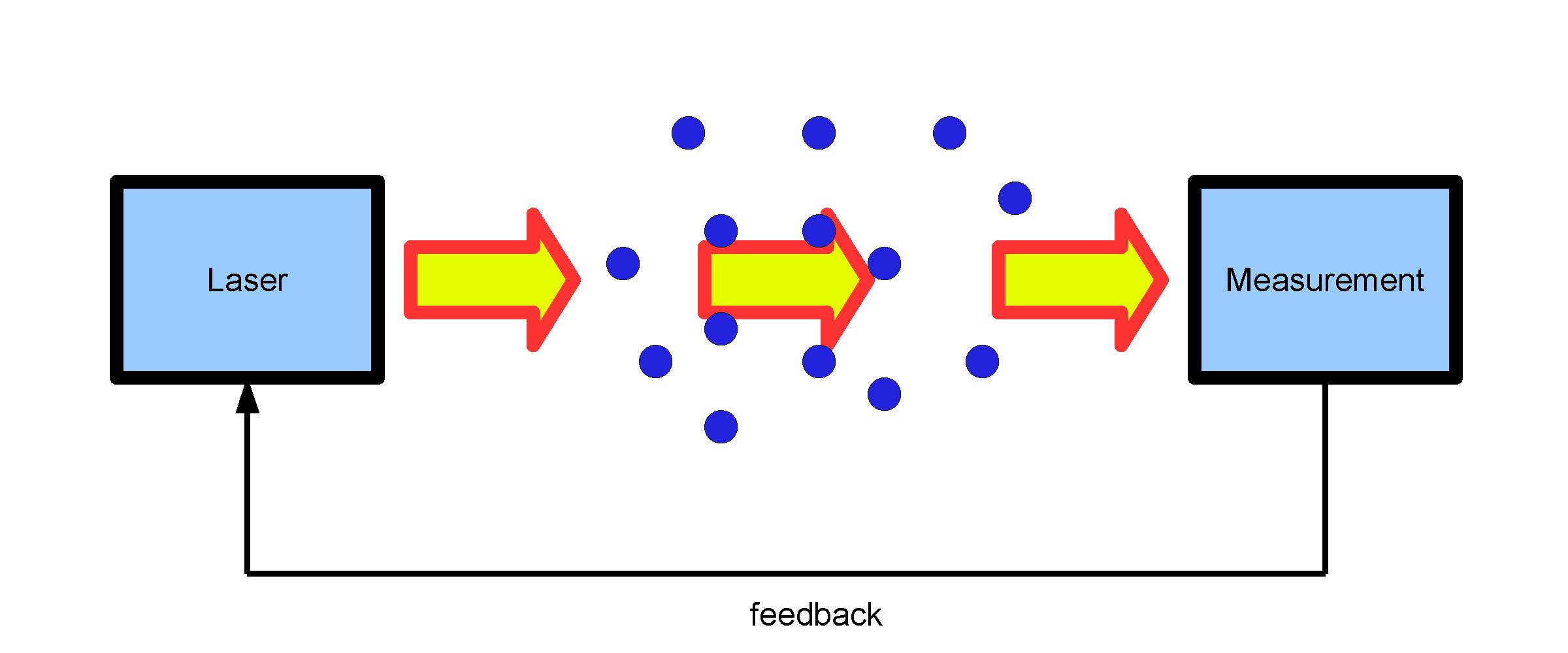Nature Communications Magazine reports that researchers have managed to create quantum entanglement in a hot, multiparticle atomic cloud. One of the authors in the article is Géza Tóth, an employee of the Wigner Physics Research Center of the Hungarian Academy of Sciences, who participated in the project with entanglement-related calculations.

Image Credit: © ICFO, Barcelona
The article is about an experiment by Morgan W. Mitchell and his team at the ICFO Institute in Barcelona. In the experiment, quantum entanglement is established in an atomic ensemble and detected by measurements. The generated state is close to a multiparticulate singlet state. The singlet state is useful in quantum metrology, for instance for detecting the gradient of a magnetic field.
Rubidium atoms are manipulated with lasers. The x, y, and z components of the collective spin are measured several times in succession, while the expected value of the components is changed to zero. In the process, the variance of the spin components decreases and the state moves closer and closer to a multiparticle ideal singlet state for which the variance of all three spin components would be zero.
One of the special features of the experiment is that similar experiments are usually performed with cold atoms. Surprisingly, a hot (463K) atomic ensemble was used here. Yet the high temperature does not preclude the establishment of macroscopic quantum entanglement. Measurements have shown that at least 1.5×1013 atoms of the 5.3×1013 atoms are involved in the experiment in the singlet state. The image shows the basic scheme of the experiment.

J. Kong, R. Jiménez-Martínez, C. Troullinou, V. G. Lucivero, G. Tóth, M. W. Mitchell,
Measurement-induced, spatially-extended entanglement in a hot, strongly-interacting atomic system, Nat. Commun. 11, 2415 (2020) .
Link to the Nature Communications article: https://www.nature.com/articles/s41467-020-15899-1.pdf



